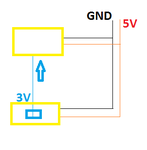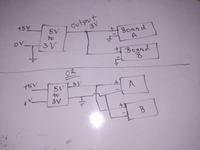xmen_xwk
Full Member level 3
I have a 5V supply powering 2 boards.
Both boards also require 3V power. Im using one voltage regulator on board B, and giving a 3V wire connection to board A.
While both boards have same GND connection from 5V power supply. Should I give another GND wire along with 3V ? If I do it will create ground loop, right ? So which one is better ?

Both boards also require 3V power. Im using one voltage regulator on board B, and giving a 3V wire connection to board A.
While both boards have same GND connection from 5V power supply. Should I give another GND wire along with 3V ? If I do it will create ground loop, right ? So which one is better ?


